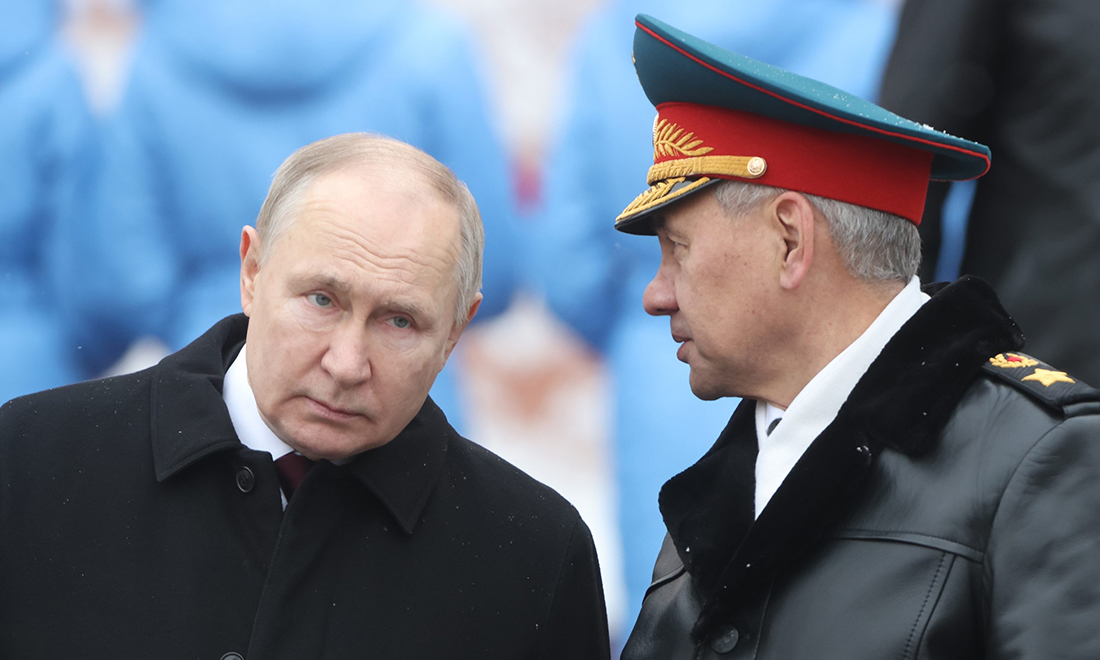
由于高利率、油气价格的下滑以及增长的乏力抑制了物价上涨,肆虐欧洲经济的通胀于今年2月再次下探,降至2.6%的水平。
3月1日,欧盟(European Union)的统计机构欧盟统计局(Eurostat)称,相比之下,欧元区20个国家2024年1月的通胀为2.8%。
如今,通胀远低于2022年10月10.6%的最高水平,当时,俄罗斯切断了大多数的天然气供应,使得能源价格一路狂飙。
欧洲央行(European Central Bank)设立的通胀目标为2%,不过,回归这个数值仍然需要时间。食品通胀率从5.6%降至4%,为中低收入人群减轻了些许负担,他们的生活必需品花费占比要高于富足人群。另一个因素是能源价格,降幅为3.7%。
通胀正在减弱的一个重要参照指标是核心通胀,后者剔除了食品和燃油价格的波动,数值为3.1%,创下了自2022年3月以来的最低值。欧洲央行一直在密切关注该数据,并将其作为衡量经济基本通胀压力的一个指标。
物价在俄罗斯切断了欧洲的大部分天然气供应之后大幅上涨,能源价格亦出现了飙升,而新冠疫情后的需求反弹导致了零部件和原材料的供应短缺困境。虽然目前这些问题有所缓和,但购买力的消失却放缓了经济的增长步伐,而且很多工人的消费能力并未因为新的薪资协议而得到恢复。
通胀的缓和让欧洲央行踏上了实现其2%通胀目标的征程,这个数值被认为是最适合经济增长的通胀率。欧元区央行迅速通过调高利率来削弱通胀在经济中的存在感,使其2023年9月的关键利率达到了创纪录的4%。
高利率会推高信贷消费的成本,继而削弱对商品的需求以及物价的上行压力,从而达到应对通胀的目的。不过,更高的信贷成本会抑制经济增长,而且欧元区2023年第四季度的经济增速为零,而此前的一个季度的增速还下滑了0.1%。
人们已经从担忧增长和温和通胀转为关注欧洲央行何时降息。银行利率设定管理委员会将在3月7日召开会议,但预计不会调整利率。
荷兰商业银行(ING Bank)的全球宏观经济业务负责人卡斯滕·布热斯基表示,该委员会与欧洲央行的行长克里斯蒂娜·拉加德或将等待更多的薪资和物价数据出炉,待确定通胀在可控范围内之后才会在今年6月降息。(财富中文网)
译者:冯丰
审校:夏林
由于高利率、油气价格的下滑以及增长的乏力抑制了物价上涨,肆虐欧洲经济的通胀于今年2月再次下探,降至2.6%的水平。
3月1日,欧盟(European Union)的统计机构欧盟统计局(Eurostat)称,相比之下,欧元区20个国家2024年1月的通胀为2.8%。
如今,通胀远低于2022年10月10.6%的最高水平,当时,俄罗斯切断了大多数的天然气供应,使得能源价格一路狂飙。
欧洲央行(European Central Bank)设立的通胀目标为2%,不过,回归这个数值仍然需要时间。食品通胀率从5.6%降至4%,为中低收入人群减轻了些许负担,他们的生活必需品花费占比要高于富足人群。另一个因素是能源价格,降幅为3.7%。
通胀正在减弱的一个重要参照指标是核心通胀,后者剔除了食品和燃油价格的波动,数值为3.1%,创下了自2022年3月以来的最低值。欧洲央行一直在密切关注该数据,并将其作为衡量经济基本通胀压力的一个指标。
物价在俄罗斯切断了欧洲的大部分天然气供应之后大幅上涨,能源价格亦出现了飙升,而新冠疫情后的需求反弹导致了零部件和原材料的供应短缺困境。虽然目前这些问题有所缓和,但购买力的消失却放缓了经济的增长步伐,而且很多工人的消费能力并未因为新的薪资协议而得到恢复。
通胀的缓和让欧洲央行踏上了实现其2%通胀目标的征程,这个数值被认为是最适合经济增长的通胀率。欧元区央行迅速通过调高利率来削弱通胀在经济中的存在感,使其2023年9月的关键利率达到了创纪录的4%。
高利率会推高信贷消费的成本,继而削弱对商品的需求以及物价的上行压力,从而达到应对通胀的目的。不过,更高的信贷成本会抑制经济增长,而且欧元区2023年第四季度的经济增速为零,而此前的一个季度的增速还下滑了0.1%。
人们已经从担忧增长和温和通胀转为关注欧洲央行何时降息。银行利率设定管理委员会将在3月7日召开会议,但预计不会调整利率。
荷兰商业银行(ING Bank)的全球宏观经济业务负责人卡斯滕·布热斯基表示,该委员会与欧洲央行的行长克里斯蒂娜·拉加德或将等待更多的薪资和物价数据出炉,待确定通胀在可控范围内之后才会在今年6月降息。(财富中文网)
译者:冯丰
审校:夏林
The inflation that has ravaged the European economy eased again in February, falling to 2.6% as high interest rates, moderating oil and gas prices, and sluggish growth held back price increases in stores.
February’s figure for the 20 countries that use the euro currency compares to 2.8% from January, the European Union’s statistical agency Eurostat said on March 1.
Inflation is now far below its peak of 10.6% in October 2022, which it hit after Russia cut off most supplies of natural gas and sent energy prices through the roof.
But the return of inflation to 2%, the goal set by the European Central Bank, is taking time. Food inflation eased to 4% from 5.6%, offering some relief to people on modest incomes who spend more of their pay on necessities than the well-off. Another factor was energy prices, which fell by 3.7%
One key sign that inflation is losing steam was so-called core inflation, which excludes swings in food and fuel prices. The figure, closely watched by the European Central Bank as a measure of underlying inflation pressure in the economy, came in at 3.1%, down from 3.3% and the lowest since March 2022.
Prices spiked after Russia cut off most supplies of natural gas to Europe, sending energy prices through the roof, and as the post-pandemic rebound led to logjams in supplies of parts and raw materials. Those troubles have eased, but lost purchasing power slowed the economy and many workers have yet to catch up through new wage agreements.
The drop in the inflation rate brings the European Central Bank closer to achieving its goal of 2% inflation, the rate considered best for the economy. The central bank for the eurozone swiftly raised interest rates to squeeze inflation out of the economy, taking its key rate to a record high of 4% in September.
Higher rates combat inflation by making it more expensive to buy things on credit, dampening demand for goods and upward pressure on prices. Higher credit costs can hold back growth, however, and that has been in short supply in Europe. The eurozone showed zero growth in the last three months of last year, following shrinkage of 0.1% in the quarter before that.
Worries about growth and moderate inflation have shifted the focus to when the ECB might start cutting rates. The bank’s rate-setting governing council meets on March 7 but is not expected to change rates yet.
The council and ECB President Christine Lagarde are likely to wait for more data on wages and prices to be sure inflation is under control before cutting rates in June, said Carsten Brzeski, global head of macro at ING Bank.






